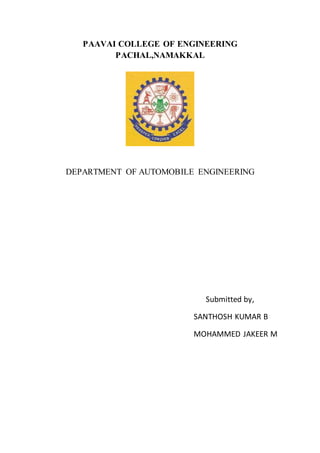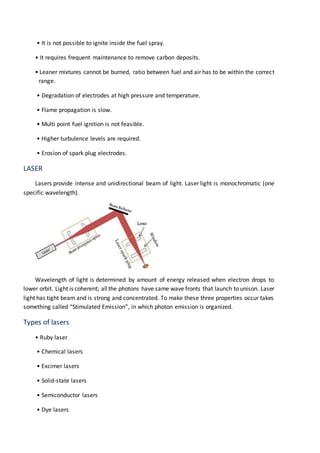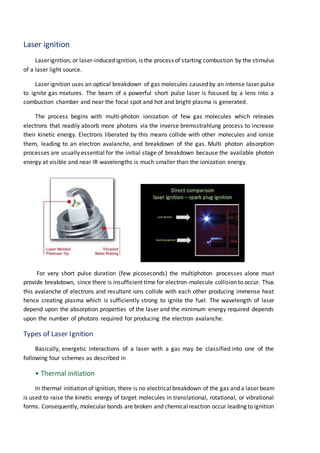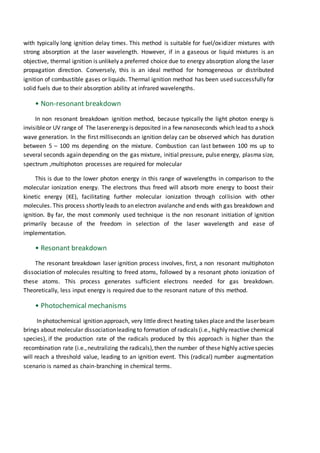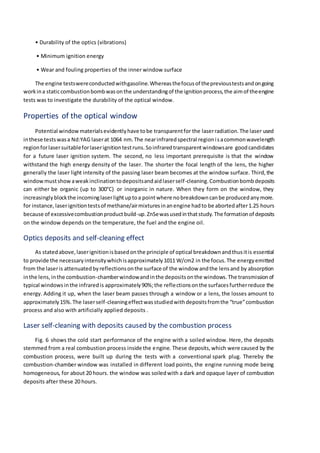This document summarizes a study on laser ignition systems for internal combustion engines. It discusses the limitations of conventional spark plug ignition systems and how laser ignition could address these issues. It describes four main types of laser ignition mechanisms and provides details on experiments conducted using a combustion bomb and engine to test laser ignition of fuels like biogas and gasoline. The document also discusses properties and durability testing of optical windows used for laser ignition systems.
